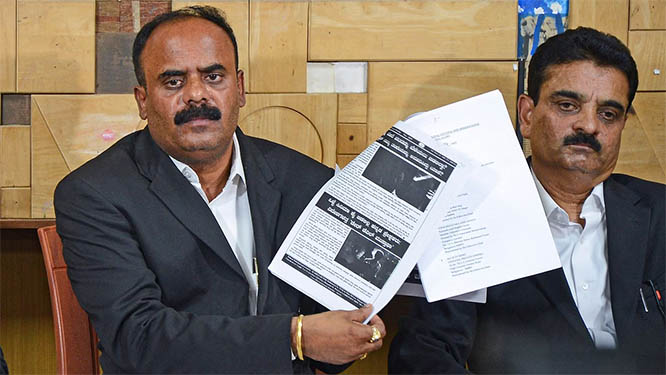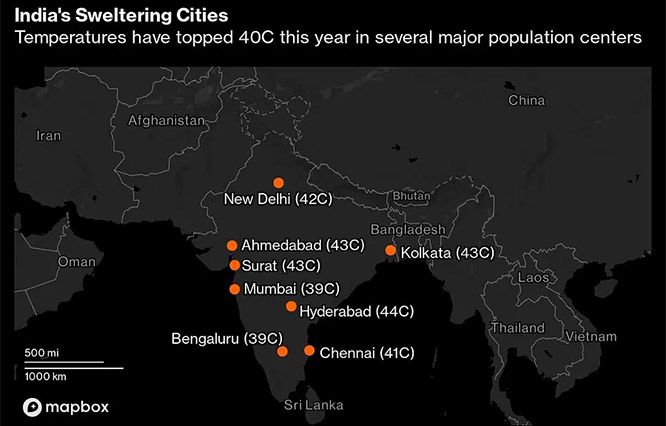Biplab Kumar Deb, the Chief Minister of Tripura, recently made a controversial comment which has since then gone viral and within a day has garnered support from many including the Governor of the state. Speaking at a Regional Workshop on Computerisation and Reforms at Pragna Bhawan in Agartala on April 17, 2018, the Bharatiya Janata Party leader said that the internet was invented by India and substantiated his claim by explaining thus: "Internet and satellite communication had existed in the days of Mahabharata. How could Sanjaya (the charioteer of King Dhritarashtra in the epic) give a detailed account and description to the blind king about the battle of Kurukshetra? It means internet was there, the satellites and that technology were there in this country at that time.”
As expected the statement met great criticism where the social media went mad mocking the statement and extending it to severe jokes around the text of Mahabharata and the possible connections one could make to the details of the text with internet and satellite.
While on the surface it appears like an act of stupidity on the part of the BJP to be repeatedly making similar statements, if one has to think why the party members make such statements, even if they believe it to be true, again and again when every time their statements of this kind is laughed at mocked at and ridiculed.
What looks like an act of stupidity might be a strategy too, it appears.
The reason for me to arrive at this suspicion is simple: When someone from the Sangh Parivar makes such claims, within no time the critics of the BJP and the RSS along with some liberals come up with several memes and jokes which more than often appear like ridiculing the text of Mahabharata and Ramayana than actually ridiculing the BJP or the RSS. This to the majoritarian community members, including a lot of apolitical kinds, get a feeling that their religion is facing threat and is being disrespected. This sense of threat makes them extend their support to the BJP which claims to be for the safeguard of the majoritarian community. So when the saffronists make stupid statements and invite the opponents and liberals to respond to it, the chief beneficiary is the BJP and its mother institution the RSS.
This works for the BJP and the RSS as they wish because of the decades of work they have done by which they have politicized religion and more importantly historicized mythology and mystified history. Years of effort has not just made Ayodhaya, a historically not so significant pilgrimage centre for the Hindus, into a significant centre in the minds of the Hindus, but also linked the mythological texts of Mahabharata and Ramayana to the identity of Hindus. Though it was Anandavardhana who centuries ago first called the ‘kaavya’ of Mahabharata, a ‘shaastra’, bringing about a major shift in the way epics are perceived, it was the 20th century politics of the RSS which linked both Mahabharata and especially Ramayana, to the identity of the Hindus and also politicized religion and thus the texts. With that achieved now whenever who critiques the texts of Mahabharata and Ramayana or mocks at it, end up not just “hurting the religious sentiments” of Hindus, though neither of them are religious texts, but also cements the support of Hindus for the BJP.
The greatest tragedy of all this is the texts of Mahabharata and Ramayana becoming either a text to worship or ridicule. While the BJP and its supporters do a religious reading of the epics, the liberals and radicals do a very ideological reading of the epics. Both the extremes fail to see the texts as poetry, as an inquiry into the human existence. Both the extremes distort the inherent philosophy of the text. In this boxing ring we all have lost a poetry which has the ability to illuminate our lives.
If it’s the poetry which is lost in this tug of war, the clear cut winner is of course the BJP, which reaps the benefits also of the criticism that comes their way.
The radicals need to find ways in which the strategies of the BJP can be punctured; especially when it comes to texts such as Mahabharata and Ramayana. Else the valid and creative criticism of the ways in which the BJP looks at these texts will go a waste and only become a cause for strengthening the base of the BJP. While it is difficult now for the radicals to call out the BJP for distorting the epics by politicizing them, the least they can do and should do is not to fall into the trap and help the rightist ideology.
[Samvartha ‘Sahil’ is a freelance writer based out of Manipal, Karnataka. An alumnus of Jawaharlal Nehru University, Delhi and the Film and Television Institute of India, Pune he has earlier worked as an academician at Manipal University and as a journalist with The Hindu. His book on the travel experiences in Jammu and Kashmir during the 2016 uprising is about to be published by the Karnataka Sahitya Akademi.]







Comments
This is a valid explanation. either i too dnt see any possible benefit in connecting religion to todays science.
there is one more point, negative publicity also makes more impact than positive one. ridiculing our epics will create impact as rightly said attacking religious views, and feeling of endangerment.
Indians are by and far religious in nature and anything spoken against, religion or god makes them offended. that negativity will subliminally helps to negate anything else to flurish. Reasoning becomes less when one is overwhelmed by negativity.
nice article. looking forward for more.
seems like a typical left conspiracy theorist.
Never attribute to malice that which is adequately explained by stupidity.
- Hanlons Razer
The reason behind the "fool decision" strategy is simple..
By those decision we may mock them, but wont protest against him. and he can easily divert people's attention from the actual issue/sim/trick
Even Modi's intention is different.. actually they making us fool by pretending as fools. That Digital money issue proves their hidden agenda. He made Paytm owner a richer guy by one night.
Great observation.. good job sahil
True.. Some fools might be there in BJP but party wont consist fully with only fools
I felt the same. They are making us fool
Add new comment